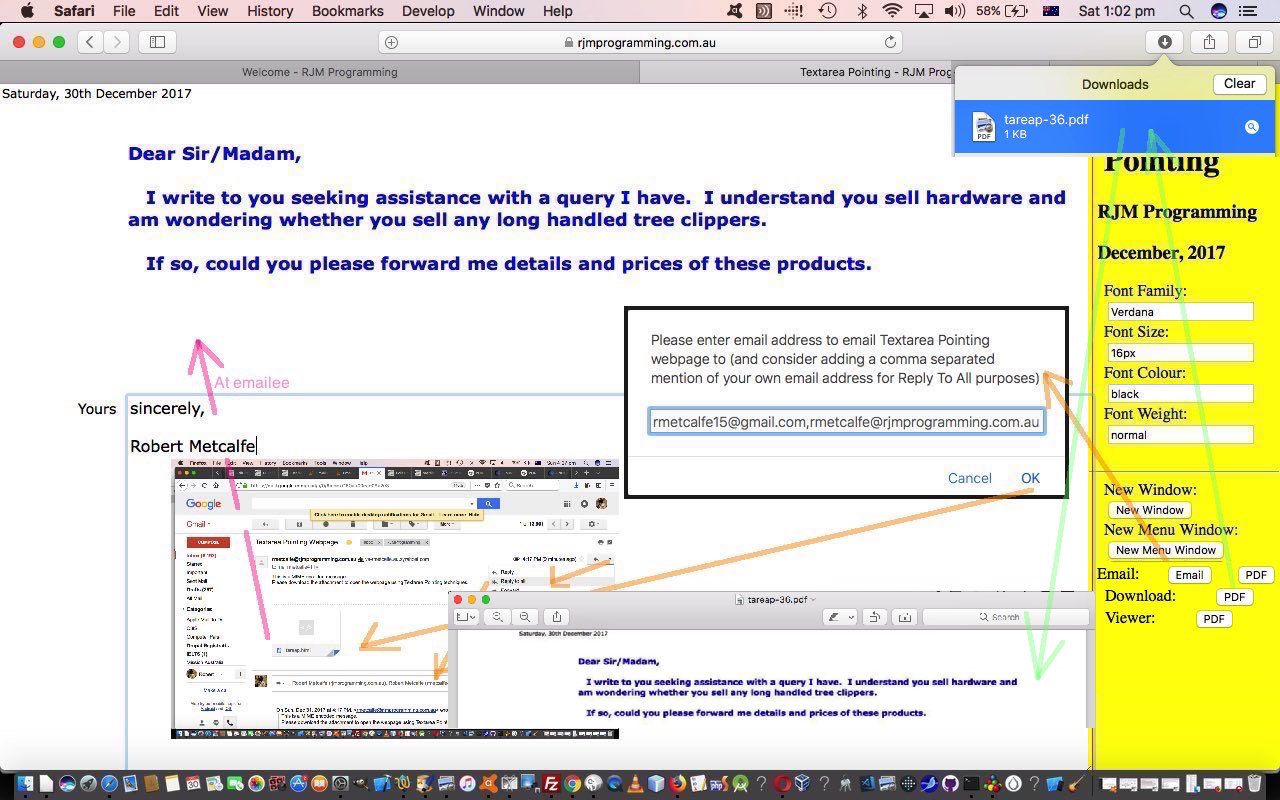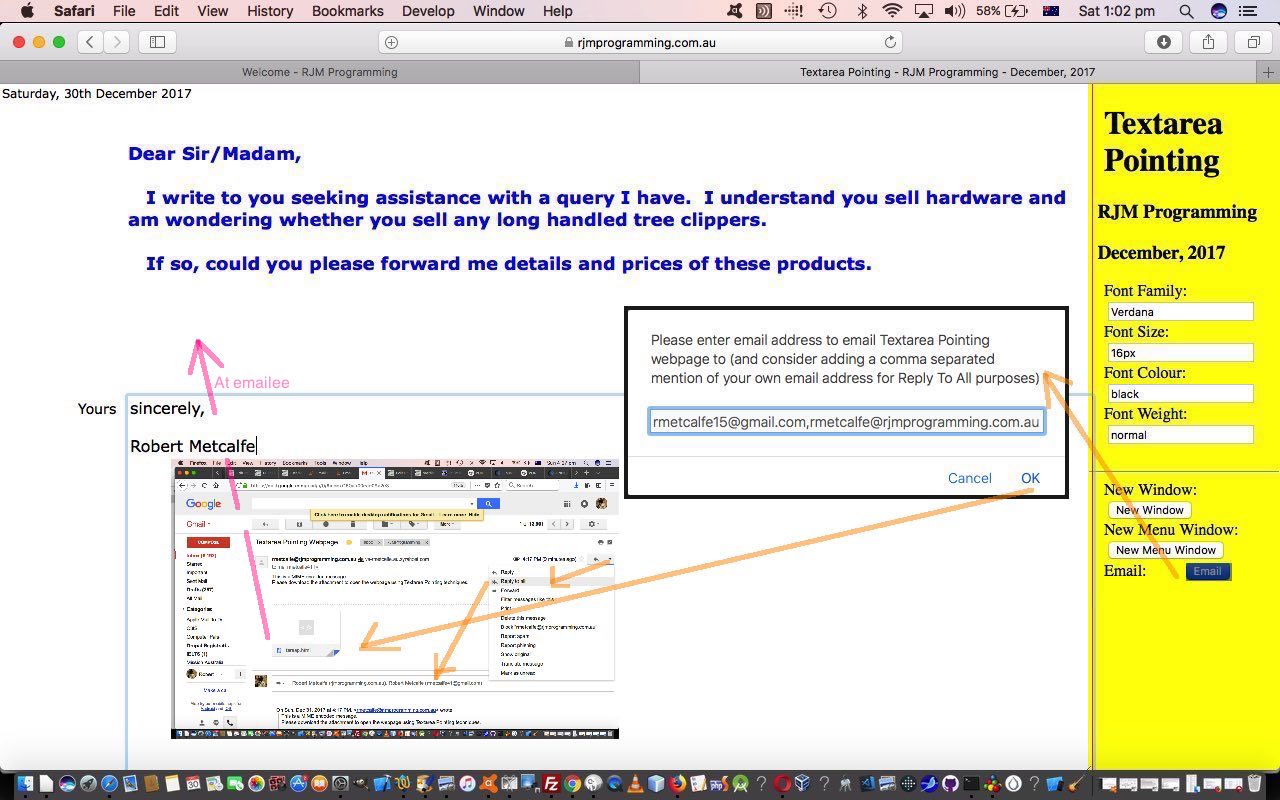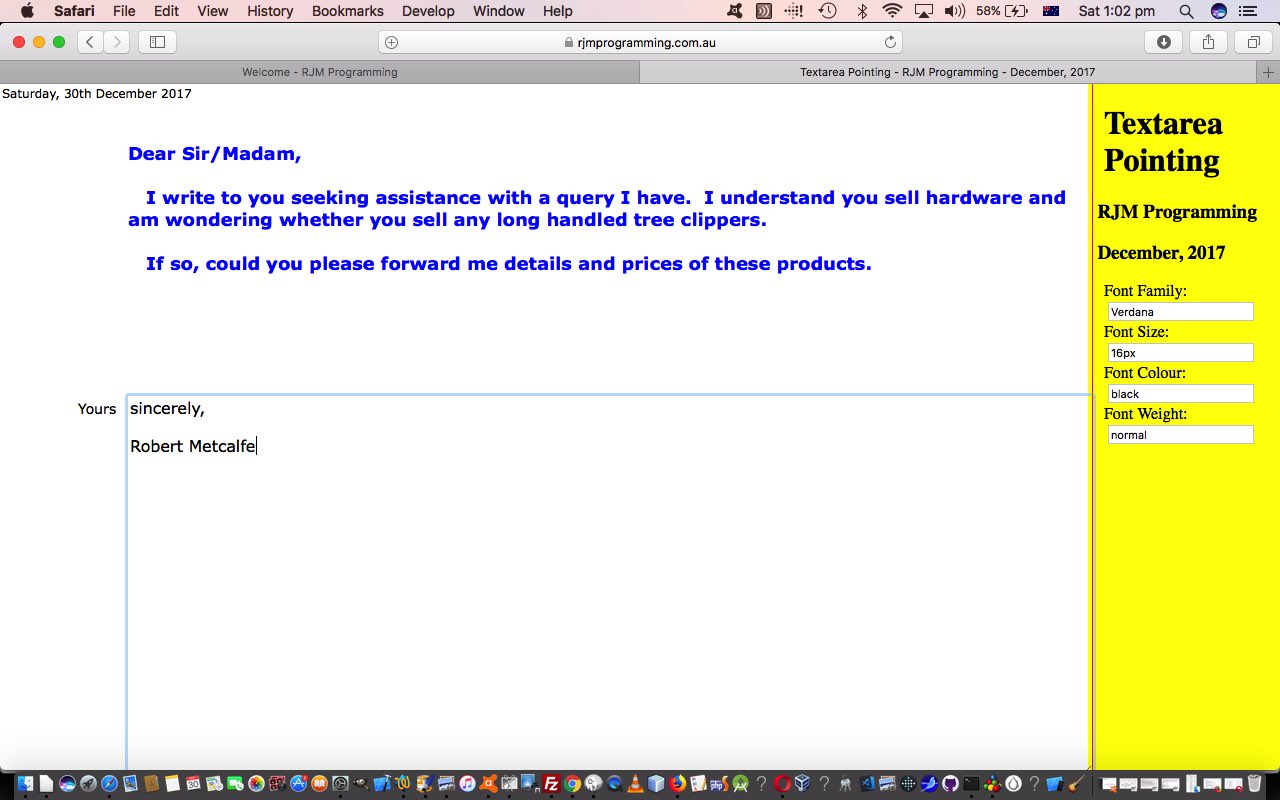Yesterday’s Textarea Pointing Email Tutorial was a start to our “sharing” functionality “push” with our new Textarea Pointing project. That work involved …
- (new window) with menu
- (new window) without menu
- email with HTML attachment … and today we add to that …
- email with PDF attachment … as well as …
- PDF download to client device
- PDF display via default client PDF viewer
… that required, again, Linux diff PDF Tutorial live run‘s prediff.php PHP code integration in this changed way. This time, though, rather than $outputpdf->Cell($x, $y, $line_of_text); being the best Fpdf means of displaying of the PDF text, we found …
$outputpdf->Text($x, $y, $line_of_text);
… to be more applicable to programming like for the way vinyl records work with their stylus, in other words, at a given …
- HTML textarea element (x,y) position … we gather …
- HTML textarea element font information stored in the alt attribute … to place text …
- to be able to …
$outputpdf->SetFont($fontFamily, $fontStyle, $fontSize);
$outputpdf->SetTextColor($fontColR, $fontColG, $fontColB);
$outputpdf->Text($x, $y, $line_of_text);
… as the “work of the code” needed to transition from our “user capture with character data” (in the “textarea”s) to a graphical system (or “widget”, you might like to think of this as). It just so happens that the first (graphical) “widget” design of interest is the creation of PDF, as it is a good conduit between “character data” and a “graphical look”. A “widget” feeling thing being what it is though, expect more integrations to come, as time goes on!
Today’s live run‘s textarea_pointing.htm code changed this way.
Previous relevant Textarea Pointing Email Tutorial is shown below.
Yesterday’s Textarea Pointing Primer Tutorial was a little too localised in its application in our books. Not if a web application is not of generic use, but this one could be of generic use, in our pamphlettes books.
Our favourite “sharing” idea is email, by far, as today, as far as that goes, we are going to offer email “services” via a “client pre-emptive iframe” determination of whether where you have placed today’s live run‘s textarea_pointing.htm code (changed this way) has, relative to it, an existant ../PHP/Geographicals/prediff.php PHP code source (that we left to go on our Textarea Pointing project) of Linux diff PDF Tutorial (live run‘s prediff.php PHP code’s last changes were used to cater for the Textarea Pointing HTML email attachment requirement).
We like to use a “client pre-emptive iframe” technique initial check for whether the HTML finds prediff.php because the email functionality is optional after all. If prediff.php is not found, then the Email button is never shown, simple as that. But the other two displays of the HTML in new popup windows …
- with menu
- without menu … as well as …
- email with HTML attachment
… complete the scope of the new “Sharing” functionalities today, and this year, on this!
So … Happy New Year!
Previous relevant Textarea Pointing Primer Tutorial is shown below.
Completely new idea today, so hoping this does not put some of you “episodic” users off. We’ll get back to incomplete recent “threads” at a later date. This is because we had pause for thought, due to yesterday’s PDF textual data positioning work, regarding one of our favourite HTML fundamental element types of interest (that we are always comparing) …
To quote HTML Textarea and Div Talents Primer Tutorial (as it was addressing the textarea HTML element) …
It’s crucial for getting HTML or non-caretted Text (that is internally turned into HTML behind the scenes) … via those wonderful tabs … off the user and onto the MySql database, and then out to the client user as part of a webpage. Out at that webpage, though, we’ve no doubt this content is embedded in an HTML div element, the other “talent” here.
But their strengths and weaknesses go like this, at least to us, in the limited HTML text view of things …
Text Functionality Issue HTML Element Type Strength Weakness (where a “Yes” is like … “Oh No!”) Display Monocolour Text Textarea Yes Div Yes Display Editable Text Textarea Yes Div Yes Display Multicolour Text Textarea Yes Div Yes
Nothing there above gives much encouragement about the HTML textarea‘s “positioning” talents. But what if we were to create a “posse”, or perhaps a “phalanx”, of “textarea”s to bank up with “bits and pieces” of the positioning “issue” (under the auspices of an HTML form element, for later accountability)?
What do we mean by “issue” here? Well, something like a letter, as with the end product of a scanning process involving a hardcopy letter, is that much more useful if what we end up with is the “characters” that go to make up that letter (or report, or essay), not some graphic (or totally visual) encapsulation of it, which can be what happens when you involve as your HTML “capture” element the “canvas” element. No, we want that “posse” of “textarea”s be that “character” source, which later, we can present as an overall graphic at a later date, for sharing purposes for instance, and maintain the “letter” (or report or essay) data continuously as the user edits.
How to do? We click/touch with a base “textarea” and that is enough to arrange for an “overlay” “textarea” (via CSS position:absolute and z-index properties, some background-color:transparent styling, along with div id=dscript (innerHTML) appended dynamic CSS styling making use of CSS calc‘ing <style> .mboard2 { width: calc(85% – 56px); } </style> type syntax (where the 56px would have been derived via the onclick event logic, the 85% is to allow for a 15% width menu at the right, and the 2 in mboard2 refers to the second textarea in question)) to follow (ironically an HTML div element is by far the best “container” in a (Javascript DOM controlled) linked list fashion for this, rather than appending to the HTML form element’s innerHTML (which seems to wipe out previous textarea values)), like a linked list of “textarea”s. Along the way we allow for font information to be collected and kept as well (for now, via the textarea‘s alt attribute), to add to the chances for variety with our overall “letter” (or report or essay) reporting end product.
Which leaves us to talk about the “textarea pointing” live run‘s underlying HTML and Javascript and CSS textarea_pointing.html code for your perusal.
If this was interesting you may be interested in this too.
If this was interesting you may be interested in this too.
If this was interesting you may be interested in this too.





